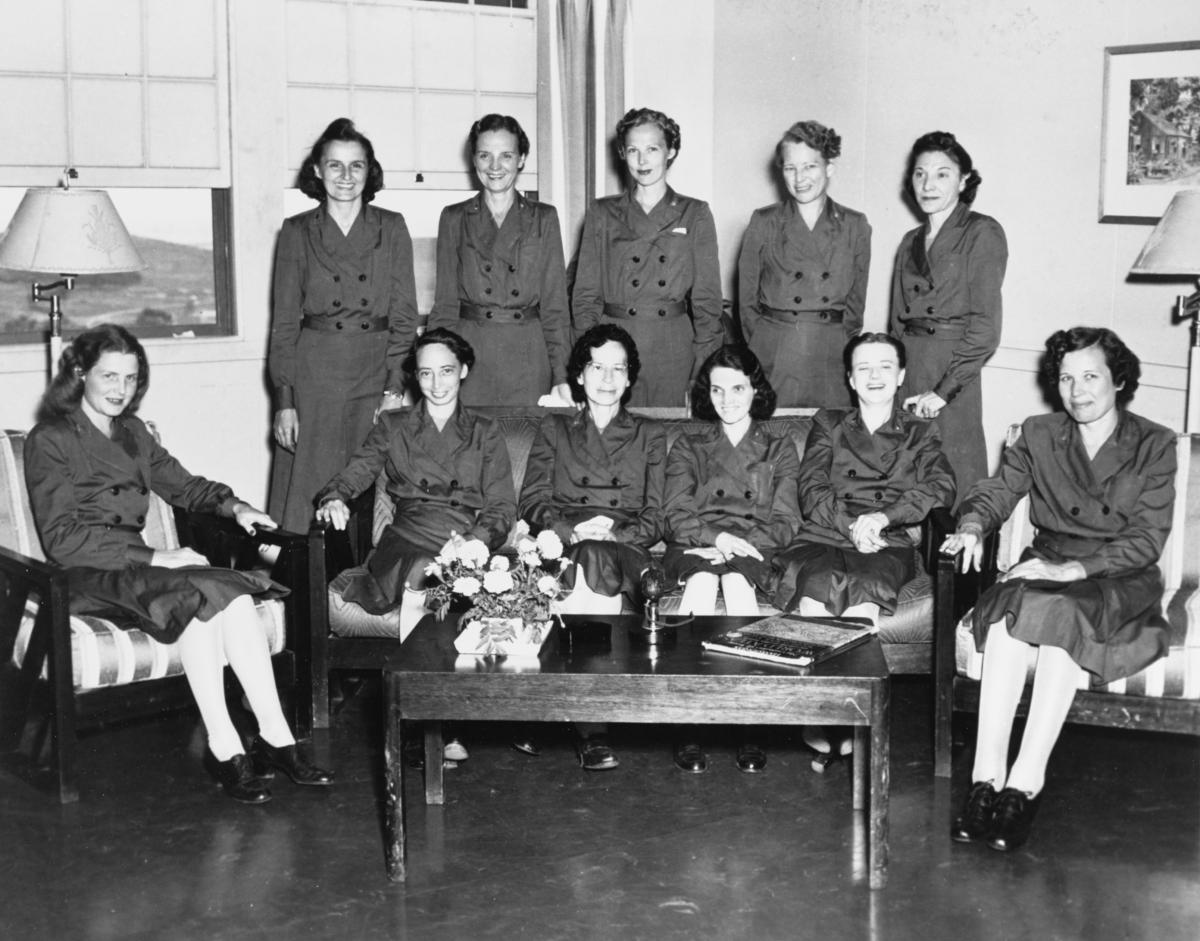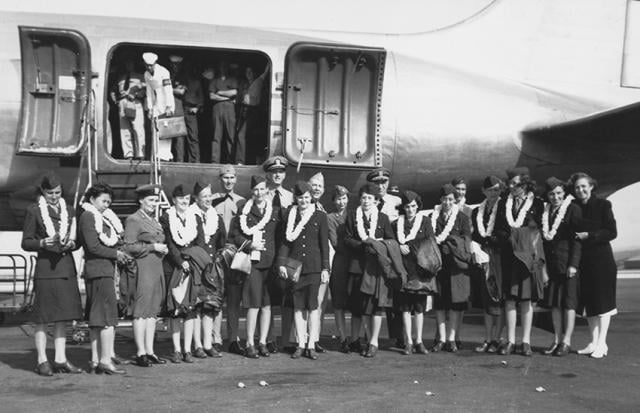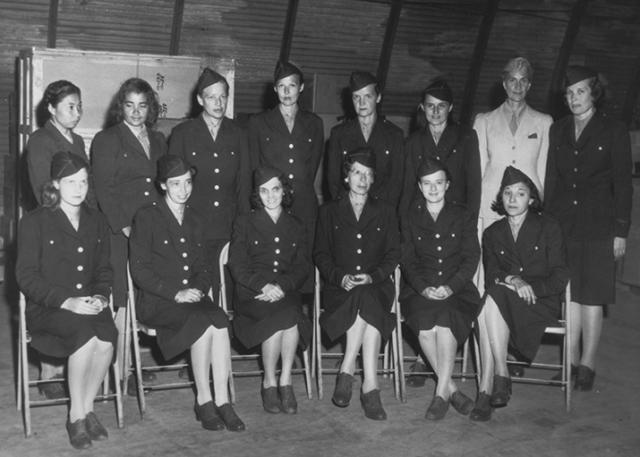The only thing worse for military members than repeating history is not knowing their heritage. Military members should learn about the women who served during World War II to ensure the long, lasting legacy of their sacrifice. This essay examines the background of Navy and Army WWII nurse Prisoners of War (POWs) and discusses both their impact and inspiration to future generations.
Background
In March 1941, none of the American nurses stationed in the Philippines during WWII expected to ever experience what lay before them. By 24 December they were on the run from the Japanese, no longer in hospital buildings but doing surgeries and taking care of their patients in the jungles of Bataan, Philippines (Norman, 2000). The nurses took care of 2,900 patients between two open-air hospitals; endured bombings; contracted malaria and dysentery alongside their patients; and battled food, clean water, and furniture shortages while keeping their morale high by breaking out in song sometimes (Norman, 2000). Early April 1942, before the death march of 72,000 U.S. and Filipino troops, General Wainwright ordered the nurses to abandon their post and move to the hospital and ward in the underground tunnels called Corregidor Island. They worked until Corregidor fell to the Japanese on 6 May 1942 and became prisoners. (Norman, 2000). In July 1942, the nurses were imprisoned in Santo Tomas Internment Camp (STIC) in Manila (Norman, 2000). By May 1943, Los Banos Internment Camp received the Navy nurses due to a hospital required for care of wounded POWs (Norman, 2000). In 1944, the Japanese captors cut POW rations to 700 calories daily (Hanes, 2012). By September, the death and disease rates from malnutrition were rising, the nurses were sautéing food with their cold cream, and America was bombing Manila (Norman, 2000). On 3 February 1945, the 1st Cavalry liberated STIC and on 22 February, the 11th Airborne Division liberated Los Banos (Norman, 2000). By the end of March, with the 77 nurses (66 Army and 11 Navy) freed, evaluated, treated, and released from the hospital in San Francisco, they returned to their hometowns (Norman, 2000).
Impact
Of the 88 American nurses that stayed in the Philippines after the initial warning to vacate, only 11 were sent home before they became POWs (Norman, 2000). These “Angels of Bataan and Corregidor,” as they were later known, were a great influence to all they served with, showing massive courage in the face of fear, keeping to strict schedules, giving the men they served with an example of a woman who never tired and was always in good cheer, and stood as an example for military women (Norman, 2000). While in the jungles of Bataan, the nurses became “the first group of American military nurses ever sent to the battlefield” (Ehrenreich, 1999). True to their nursing code of ethics, they did not want to leave their 16,000 patients to die in the jungles, but instead followed their orders (Norman, 2000). What they endured would not be known if not for the diaries, journals, and personal stories they kept. The Angel’s situation was instrumental in U.S. government marketing: dramatizing the situation in a few wartime romance movies, motivating industrial production via posters, and motivating the recruitment of additional nurses and Red Cross Volunteers (Norman, 2000). These recruiting techniques resulted in the Army and Navy Nurse Corps ranks doubling (Norman, 2000). Survivors of the “Death March,” who believed The Angels never received any credit for the sacrifices they made, honored them with a brass plaque on a monument at Bataan (Norman, 2000). The plaque recognizes the “valiant American military women who gave so much of themselves in the early days … [who] provided care and comfort to the gallant defenders … lived on a starvation diet, shared the bombing, strafing, sniping, sickness, and disease while working endless hours of heartbreaking duty … earned the name The Angels of Bataan and Corregidor” (Norman, 2000).
Inspiration
Due to the time frame, the Angels received little recognition for their service in the war. However, they are legendary among military nurses and women as paving the way for all females to be able to deploy and integrate into all male units. Their ability to endure and survive hardship proves that average women from all over America can come together and survive while never losing their commitment to their patients, their country, and themselves. “As the first American women to see combat," they inspire loyalty to country, fellow comrades, and self, sacrifice of self and comfort, obedience to their job and morale of others, and an innate discipline to endure (Hanes, 2012). To all that hear or read their story, they inspire patriotism, endurance of hardships, and make the saying “not all women wear pearls and sensible shoes to work: some wear dog tags and combat boots” that much truer (Anonymous, n.d.). Today, leaders use the techniques of loyalty, obedience, sacrifice, discipline, and morale boosting when motivating themselves and others. Since their story is now published, current and future leaders can learn from the example these heroic women, utilize the Angels and their story to provide role models to emulate for junior personnel and themselves.
In summary, military members should learn about the women who served during World War II to ensure the long, lasting legacy of their sacrifice. Knowing and teaching younger generations of military members their heritage results in a long and lasting legacy. As Tim Redmond says, “there are many things that will catch my eye, but there are only a few things that will catch my heart (Maxwell, 2007).”
1. B. Ehrenreich, "Women at War: The story of a group of nurses sent to the battlefield in World War II," The New York Times, 23 May 1999.
2. E. Hanes, "The Angels of Bataan and Corregidor: 70 Years Later," History.com, 16 April 2012.
3. J. C. Maxell, "The law of respect," in The 21 Irrefutable Laws of Leadership: Follow Them and People Will Follow You (Nashville, TN: Thomas Nelson, Inc., 2007), 181.
4. E. M. Norman, We Band of Angels: The Untold Story of American Nurses Trapped on Bataan by the Japanese (New York, NY: Simon & Schuster, 2000).





